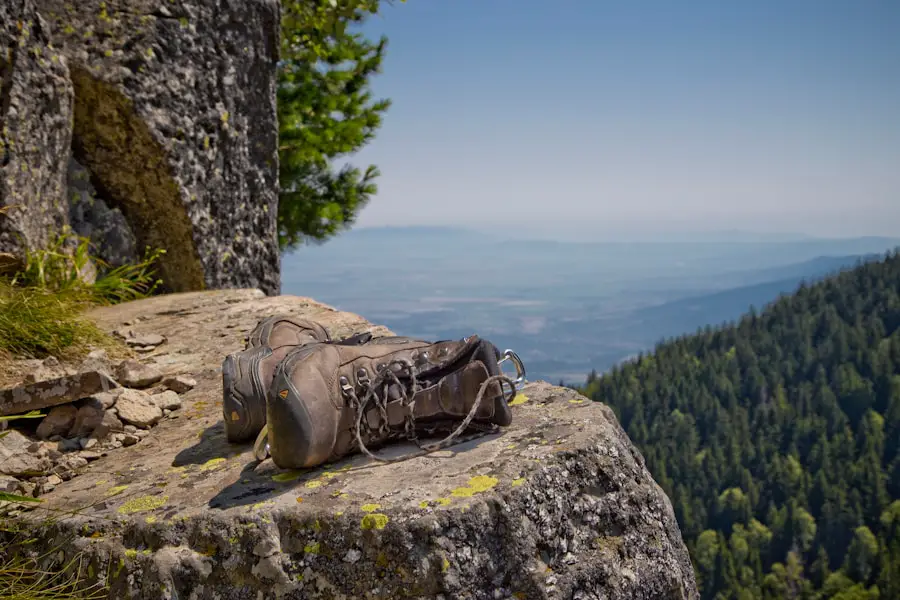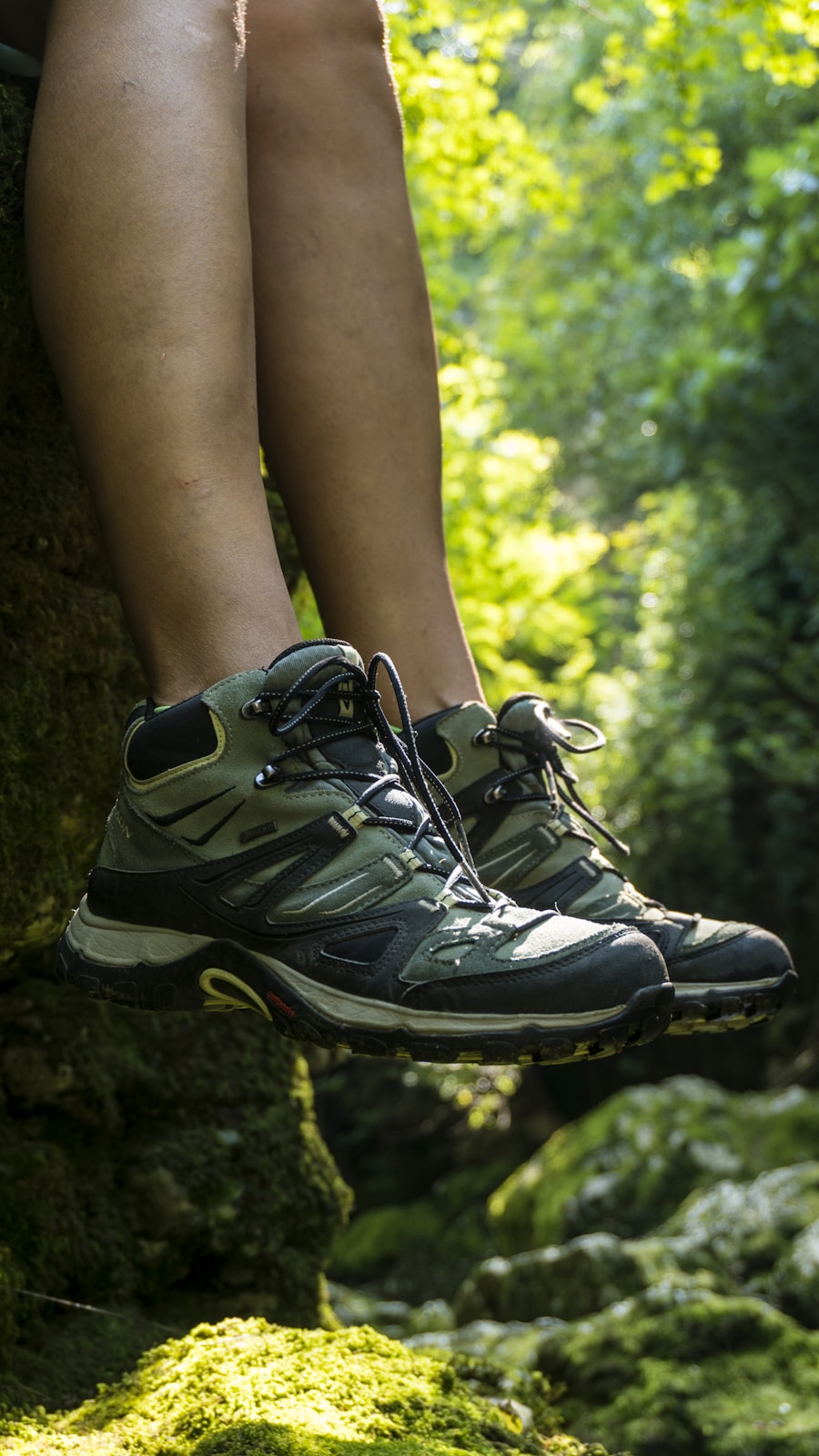Hoka One One, a brand that has gained significant traction in the running and hiking communities, is renowned for its distinctive footwear design characterized by maximal cushioning and a lightweight structure. Originally developed for road running, Hokas have evolved to cater to various outdoor activities, including hiking. The brand’s philosophy revolves around providing a comfortable and supportive experience, which is particularly appealing to hikers who often traverse challenging terrains.
The unique design features, such as a wide toe box and a rocker sole, contribute to a more natural gait, making them an intriguing option for those who spend extended periods on their feet. The rise of Hokas in the hiking world can be attributed to their ability to combine comfort with performance. Hikers are increasingly seeking footwear that not only protects their feet but also enhances their overall experience on the trails.
As more outdoor enthusiasts share their positive experiences with Hokas, the brand has garnered a loyal following among both casual hikers and serious trekkers. This article delves into the benefits and drawbacks of using Hokas for hiking, how to select the right pair, tips for maximizing your hiking experience with them, and how they stack up against traditional hiking footwear.
Key Takeaways
- Hokas are a popular choice for hiking due to their cushioning and support, making them suitable for long-distance and rough terrain.
- Benefits of using Hokas for hiking include superior cushioning, stability, and protection from impact, reducing fatigue and risk of injury.
- Drawbacks of using Hokas for hiking may include reduced ground feel and potential for overheating due to the thick cushioning.
- When choosing the right Hoka for hiking, consider factors such as terrain, foot shape, and personal preferences for cushioning and support.
- Tips for hiking with Hokas include breaking them in before long hikes, maintaining proper foot hygiene, and using appropriate socks for moisture management.
Benefits of Using Hokas for Hiking
One of the most significant advantages of using Hokas for hiking is their exceptional cushioning. The brand’s signature EVA foam midsole provides a plush feel that absorbs impact, reducing fatigue during long hikes. This feature is particularly beneficial for hikers who tackle rugged terrains or carry heavy packs, as it helps to minimize stress on the joints.
The cushioning also allows for a more comfortable experience on hard surfaces, such as rocky trails or packed dirt paths, where traditional hiking boots may feel rigid and unforgiving. Another notable benefit is the lightweight nature of Hoka footwear. Many hikers find that traditional hiking boots can be cumbersome, leading to increased fatigue over time.
In contrast, Hokas are designed to be lightweight without sacrificing support or stability. This combination allows hikers to maintain their energy levels over long distances, making them an attractive option for those who enjoy multi-day treks or long day hikes. Additionally, the breathable materials used in Hoka construction help regulate temperature and moisture, further enhancing comfort during strenuous activities.
Drawbacks of Using Hokas for Hiking

Despite their many advantages, Hokas are not without their drawbacks when it comes to hiking. One of the primary concerns is the lack of ankle support compared to traditional hiking boots. While some models do offer a higher cut that provides additional support, many Hoka shoes are designed as low-cut options.
This can be a disadvantage for hikers navigating uneven terrain or carrying heavy loads, as the risk of ankle sprains may increase without the added support of a boot. Another potential drawback is the durability of Hoka footwear. While the cushioning and lightweight materials contribute to comfort, they may not withstand the same level of wear and tear as more robust hiking boots.
Hikers who frequently traverse rocky or abrasive environments may find that Hokas wear out more quickly than traditional options. Additionally, the maximal cushioning can sometimes lead to a lack of ground feel, which may hinder a hiker’s ability to gauge terrain changes effectively. This disconnect can be particularly concerning for those who prefer a more responsive shoe that allows them to feel the ground beneath their feet.
How to Choose the Right Hoka for Hiking
| Model | Weight | Cushioning | Traction | Waterproof |
|---|---|---|---|---|
| Torrent | 10.5 oz | Responsive | Good | No |
| Speedgoat | 10.3 oz | Plush | Excellent | Yes |
| Challenger | 9.5 oz | Balanced | Very Good | No |
Selecting the right Hoka for hiking involves considering several factors tailored to individual needs and preferences. First and foremost, it is essential to assess the type of hiking you plan to undertake. For instance, if you primarily hike on well-maintained trails, a lightweight model with ample cushioning may suffice.
However, if your adventures lead you into more rugged or technical terrain, opting for a model with enhanced traction and stability features becomes crucial. Fit is another critical aspect when choosing Hokas for hiking. The brand is known for its roomy toe box, which can accommodate various foot shapes and sizes.
It is advisable to try on different models and sizes to find the best fit, ensuring that there is enough space in the toe area while still providing a snug fit around the heel. Additionally, consider any specific foot issues you may have, such as pronation or arch support needs, as some Hoka models offer varying levels of support that can cater to these requirements.
Tips for Hiking with Hokas
When embarking on hikes with Hokas, there are several tips that can enhance your experience and ensure optimal performance from your footwear. First, it is essential to break in your Hokas before tackling long hikes. While they are designed for comfort, wearing them on shorter walks or around the house can help you acclimate to their unique feel and ensure that any potential pressure points are addressed before hitting the trails.
Another important consideration is sock choice. The right socks can significantly impact comfort during hikes. Opting for moisture-wicking socks made from synthetic materials or merino wool can help keep your feet dry and reduce the risk of blisters.
Additionally, consider using thicker socks if you plan on wearing your Hokas in colder conditions or if you prefer a snugger fit. Lastly, pay attention to your gait and stride while hiking in Hokas. The rocker sole design encourages a natural rolling motion from heel to toe, which can enhance efficiency on flat terrain but may require some adjustment on steep inclines or declines.
Being mindful of your foot placement and adjusting your stride accordingly can help you maintain stability and prevent fatigue.
Comparing Hokas to Other Hiking Footwear

When comparing Hokas to traditional hiking footwear, several key differences emerge that can influence a hiker’s choice. Traditional hiking boots are often constructed with stiffer materials designed to provide maximum support and protection against rough terrain. This rigidity can be beneficial for those who frequently hike in rocky environments or carry heavy loads but may come at the cost of comfort during long distances.
In contrast, Hokas prioritize cushioning and lightweight construction, appealing to hikers who value comfort over maximum support. While they may not provide the same level of ankle stability as traditional boots, many users find that the trade-off in weight and comfort is worth it for less technical hikes or day trips. Additionally, some hikers appreciate the versatility of Hokas; they can transition seamlessly from trail running to casual wear without needing a change of footwear.
Another point of comparison lies in traction capabilities. Many traditional hiking boots feature aggressive outsoles designed specifically for grip on various surfaces. While Hokas do offer models with good traction, they may not match the performance of specialized hiking boots in extremely slippery or uneven conditions.
Therefore, hikers should consider their typical environments when deciding between Hokas and traditional options.
Expert Opinions on Hokas for Hiking
Expert opinions on Hokas for hiking vary widely based on individual experiences and preferences within the outdoor community. Some outdoor enthusiasts praise Hoka footwear for its innovative design and comfort level, particularly during long-distance hikes where fatigue can become an issue. Many runners who have transitioned into hiking appreciate the familiar feel of Hoka shoes, noting that they provide ample cushioning without compromising performance.
Conversely, some experts caution against relying solely on Hokas for all types of hiking scenarios. They emphasize the importance of selecting footwear based on specific trail conditions and personal needs. For instance, experienced hikers often recommend having multiple pairs of shoes tailored to different environments—Hokas for well-maintained trails and lighter loads while reserving traditional boots for more challenging terrains where ankle support is paramount.
Additionally, podiatrists and physical therapists have weighed in on the benefits of Hoka’s cushioning technology for individuals with certain foot conditions or those recovering from injuries. They highlight how the shock-absorbing properties can alleviate stress on joints during prolonged activity but also advise users to remain mindful of their foot mechanics when transitioning from traditional footwear.
Are Hokas Good for Hiking?
The question of whether Hokas are good for hiking ultimately depends on individual preferences and specific hiking conditions. For those who prioritize comfort and cushioning during their outdoor adventures, Hokas present an appealing option that can enhance overall enjoyment on the trails. Their lightweight design allows hikers to cover greater distances with less fatigue while still providing adequate protection against various terrains.
However, it is essential to recognize that Hokas may not be suitable for every hiker or every situation. Those who frequently navigate technical trails or require maximum ankle support may find traditional hiking boots more appropriate for their needs. Ultimately, understanding personal requirements and considering factors such as terrain type and duration of hikes will guide hikers in making informed decisions about whether Hokas are the right choice for their outdoor pursuits.
If you’re looking for the best gear for your next hiking adventure, you may also want to consider investing in a high-quality travel camera backpack. This article from
